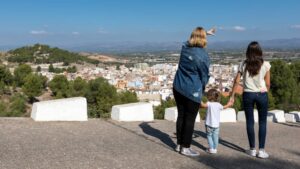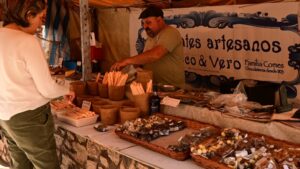A memory of the waterwheels of Xàbia
Local historian David Gutiérrez looks at the history of the waterwheels and wells in Xàbia.
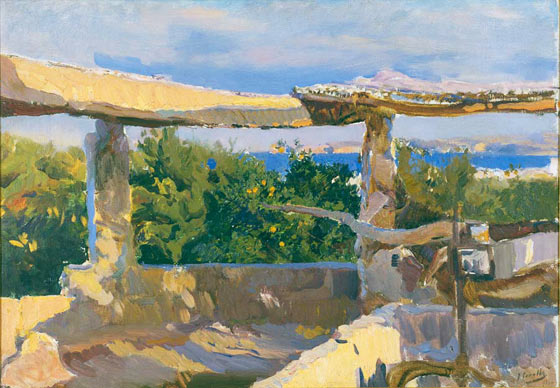
Wednesday 28th April 2021 – DAVID GUTIÉRREZ PULIDO with Mike Smith
Let’s move back to the past and remember one of the architectural elements related to the water that flooded the landscape of Xàbia as far as the valley and the area near the coast is concerned. We are talking about the famous ‘norias‘ or ‘sénias‘, rustic constructions that provided water for the irrigation of the crops thanks to the mechanism of a wheel.
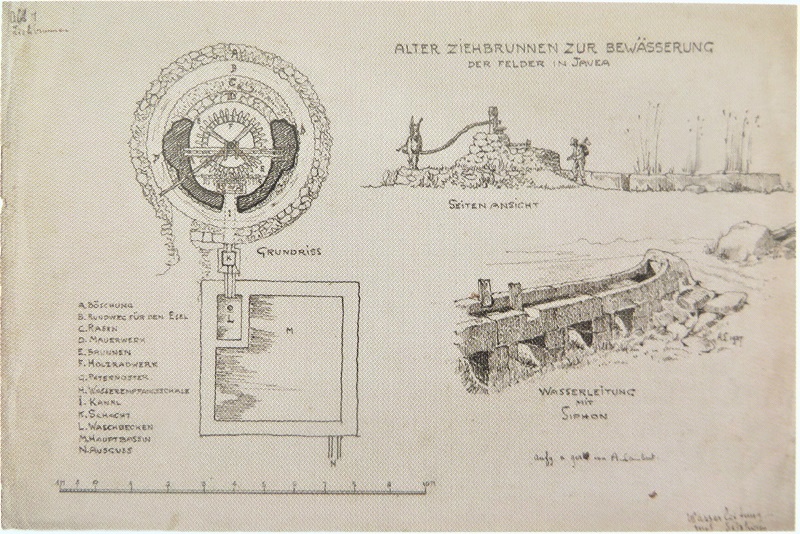
To create a ‘noria‘, you first need to make a well from where you can get fresh water. Once done, a circular installation called mota or andador was built outside, which was elevated from the ground and was reinforced by a dry stone wall or ashlar masonry. A wheel mechanism was placed in the centre of this structure, consisting mainly of two wheels, a vertical one collect the water and a horizontal one that attached to the first and provided the energy to turn it. A lever protruded from the horizontal wheel which was attached to an animal, usually a donkey or mule, which walked in a circle around the structure to generate all the movement of the machinery.
The water extracted from the well was poured into some type of trough or structure from where a channel led to a ditch or a quadrangular water reservoir (bassa).
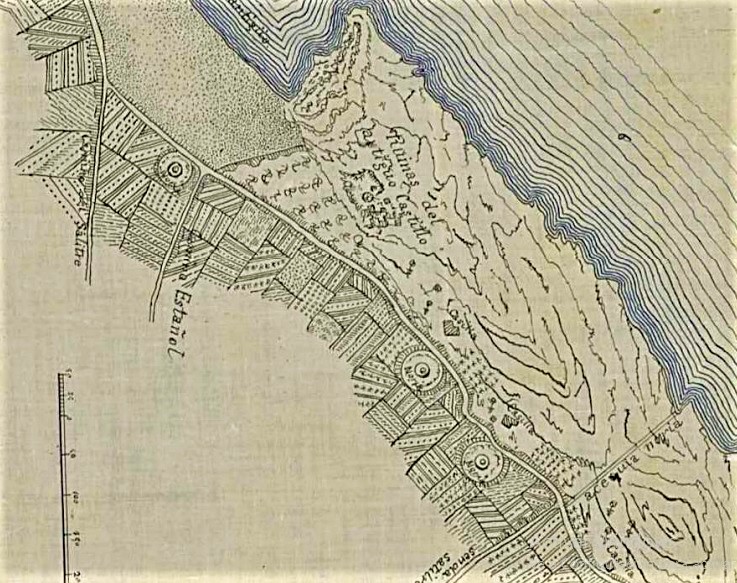
The origin of these waterwheels dates back to antiquity and in Xàbia they must have existed for quite some time. However, one of the oldest mentions is found in a document from 1717 which states the existence of “a house and senia in part of the Camino de la Fontana y Servera”, another “senia de Pere Español” or “senia al Saladar“. In one of the preserved maps of Xàbia with the title General Plan of the Jávea Bay signed on December 25th 1875, we can see that along the coast are drawn four waterwheels, one of them in the Montañar I and the other three together to the Arenal and Montañar II. Nor should we forget how in the seventeenth century a waterwheel was built in the Roman irrigation channel to collect seawater and move it onto the salt flats.
The fact is that in the late nineteenth or early twentieth century there were a total of 180 waterwheels in Xàbia that operated at full capacity both in the morning and in the afternoon, always watching the pace of the animal and taking care of any fatigue of the same as the historian Juan Bautista Codina relates in his memories.
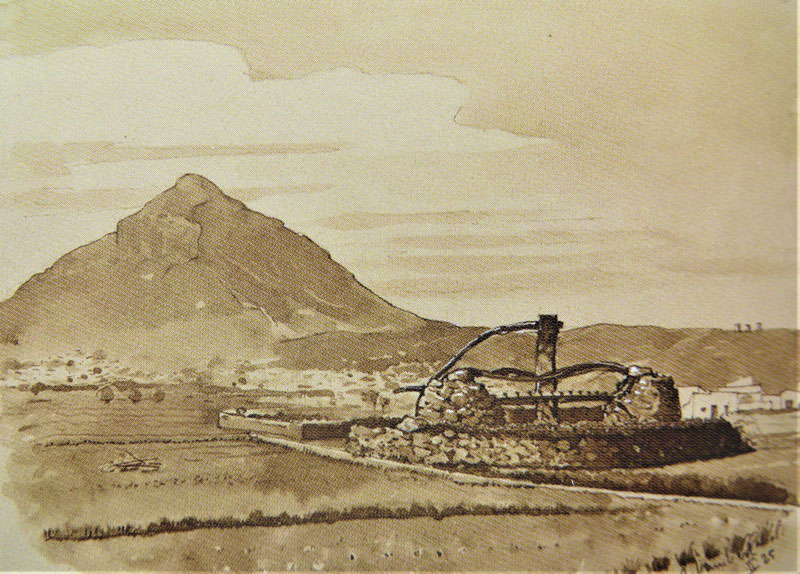
These waterwheels have also been the subject of artistic representation, we can only remember the beautiful painting by Joaquín Sorolla entitled Noria, Jávea (1900) which is preserved in the Sorolla Museum (inv. 476) reflecting the mechanism in the foreground with a donkey and in the background, the landscape of Cape San Martín. Andrés Lambert also wanted to include in his engravings and drawings some of them such as the Sénia del Pla (1925) or the Hort Bolufer (1927).
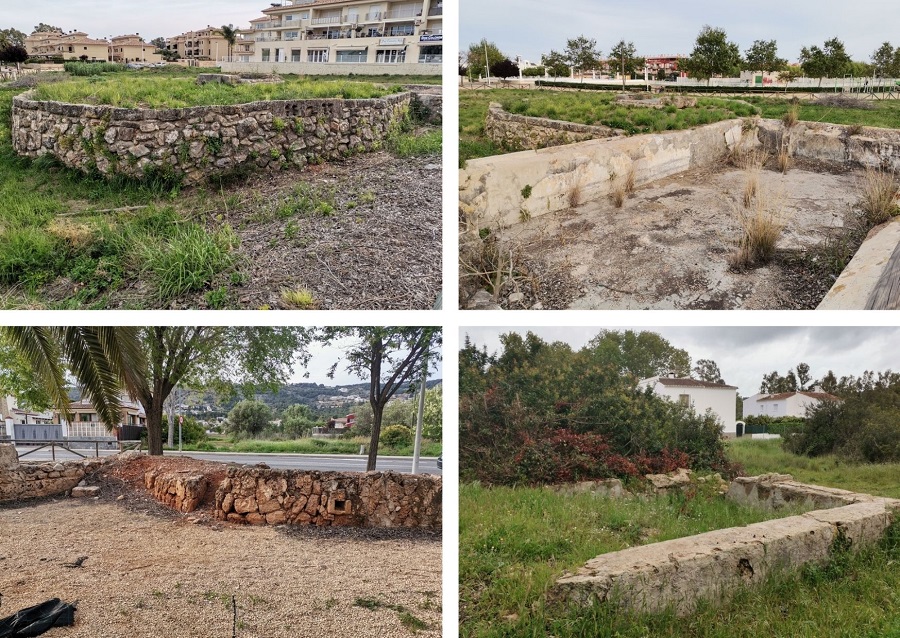
Bottom left: the waterwheel in Avenida dels Furs / Carrer Vall d’Ebro
Bottom right: the reservoir in Calle Atenas
Today these waterwheels have disappeared and no longer perform their function. The only memory we have of them are present in the oral memory, in some photographs and fortunately in the conservation of some of the structures and the associated reservoirs. The most outstanding example is the so-called Sénia de Cruanyes located on Avenida dels Furs which perfectly preserves the well next to the reservoir. A few metres away, on the same road at the junction with Carrer Vall d’Ebro, there is also another well structure.. If we walk along Calle Atenas at the height of Calle Mykonos, one can also see the remains of a reservoir that would be associated with another well or also mention the well preserved with its access ramp and associated reservoir in Camí de les Basses . These are just a few examples of many others, not many, that have been preserved and in some cases have even been protected in the General Plan of Xàbia (2013).


